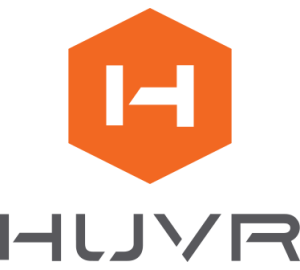Not all software partners are created equal. Before you trust your livelihood to a platform, ask how it safeguards your data.
At HUVR, we understand the critical importance of your inspection data’s integrity and accessibility. Our platform is built for efficient storage and retrieval of both large files and all associated data (projects, sites, checklists, users, etc.). Ensuring the safety of this valuable data is a core commitment to our clients. This article details our comprehensive backup and restore strategy, showing how we protect your information from minor mishaps to major incidents.
Comprehensive Data Protection: Files and Database Entries
Data within the HUVR system is comprised of two types:
- Files: This includes all file-like objects such as imagery and PDFs. These are securely stored in Google Cloud Storage (GCS).
- Database Entries: This encompasses all structured data like projects, checklists, users, and sites. Our database is isolated per customer workspace and are highly available.
All backup and restore operations are performed on the entire “workspace,” which is the top-level object defining your subdomain and holding all other related objects.
Designed for Recovery: RTO and RPO
Our backup scheme and architecture are designed around two critical objectives:
- Recovery Time Objective (RTO): This is the maximum acceptable length of time your application can be offline. For HUVR, our RTO is less than 24 hours, primarily driven by the time it takes to restore files.
- Recovery Point Objective (RPO): This defines the maximum acceptable length of time during which data might be lost due to a major incident. Our RPO is less than 1 hour, meaning we aim to minimize any potential data loss to a very short window.
These objectives are crucial for ensuring minimal disruption and data loss, even in the event of unforeseen circumstances. It’s also worth noting that HUVR maintains a system uptime of over 99.9%.
Strong Backup Strategies
We isolate our production data from our staging and development environments to ensure that upgrades do not impact your live data. We also take a comprehensive approach to database backups:
Database Backup
- Continuous Backup: Our database is continuously backed up using Point in Time Recovery.
- Daily Full Backups: A daily backup is performed for the entire database.
- Individual Workspace Backups: To facilitate quick and efficient per-workspace recovery, individual workspaces are also backed up.
- Geo-Redundancy: All database backups are stored in multi-region storage, providing protection against data loss from a single data center incident.
File Backup
Our file backup and recovery rely on the capabilities of Google Cloud Storage (GCS):
- Regional Redundancy: Each customer file is stored with its location set to “region” (typically “US-Central” in Iowa). This provides data redundancy across availability zones.
- Automated Failover: GCS offers an RTO of 0, meaning automated failover and failback in case of a zonal failure, with no need to change storage paths.
- Object Versioning: HUVR utilizes object versioning to protect against accidental file deletion. This feature retains deleted files for a set period before permanent deletion, offering an extra layer of protection.
In the Event of a Disaster: Product and Workspace Level Recovery
We have a clear, structured plan for worst-case scenarios, including major disasters or accidental project deletions. Our robust architecture and backup processes are designed to quickly restore service and recover data with minimal disruption.
Your Trust, Our Commitment
At HUVR, the safety of your data is our highest priority. Our comprehensive backup and recovery strategies, combined with our clear recovery objectives, ensure your valuable inspection data is protected, secure, and always accessible when you need it. Furthermore, our commitment to security is externally validated through regular third-party penetration tests and audits, so you don’t just have to take our word for it.


